When to Plant Onions: Expert Guide for Perfect Bulbs

Written by
Tina Carter
Reviewed by
Prof. Charles Hartman, Ph.D.In the early spring, plant onions when soil reaches a temperature of 40°F (4°C)
Zone 6: Start seeds indoors 10 weeks before the last frost
Short-day varieties perform well in a fall planting in Zones 7-10
To avoid rot, plant sets at a depth of 1-inch (2.5 cm)
Water 1.5 inches (3.8 cm) per week once bulbs begin to form
Use row covers if nighttime temperatures are expected to drop below 28°F (-2°C) to protect from frost
Article Navigation
Establishing when to plant onions matters most for growing small bulbs versus bragging about huge harvests. I have grown onions in everything from containers in my backyard to fields in the Midwest. The key part of it all is matching your planting calendar to your climate and onion choice. At the right time, a balcony can give you a fist-sized onion too.
The size your onion will take on has already been determined during the first weeks of its life in the soil. If you plant them too early into cold soil, the roots won't grow very well. If you wait too long, when it is hot outside in the summer, the onions will stop growing. I learned this the hard way last year taking the loss of my crop to the frosts in May. It taught me to watch the soil temps now very closely.
You may not realize how much onion growth is controlled by day length. Short-day onions, like 'Texas Grano', bulb up in just 10 hours of sunlight, great for Southern growers, and long-day onions like 'Walla Walla' thrive in Northern gardens where they get 14 hours of daylight. Pick the right one, or you will have nothing but greens - no bulbing.
Gardeners in Texas face different challenges from those in Vermont. Here in Austin, I cultivate short-day onions in the fall, harvesting them the following spring. In Maine, my cousin plants long-day sets about a week after Mother's Day. The secret to both strategies is the difference in climate adaptations. Onion planting plans must be based on your zip code.
Best Time by Zone
Gardeners in Zone 6 occupy a wonderfully perfect place for growing onions. You can plant long-day varieties (e.g., 'Yellow Sweet Spanish') when soil temperatures reach 40°F (4°C), which is about mid-March to early April. My neighbor in Ohio always says to plant them in this time frame, from his decades of experimentation. Short-day type varieties will have enough thermal energy to germinate and grow here, but ONLY if started indoors and grown and acclimatizing under grow lights.
Long-day onions need at least 14 hours of sunlight per day for proper bulb formation, which makes them perfect for northern growing zones. Short-day types are recommended for southern growers because they require less than 10 hours for proper bulb formation. I suffered the loss of an entire crop in Tennessee by using long-day onions when I should have used short-day onions. Pay close attention to the type of onions you want and check seed packets for the words 'long-day' or 'short-day' before you purchase them.
Utilize a soil thermometer to monitor soil temperatures. The ideal reading for seed to directly sow outdoors is 40°F (4°C). Light frost-free-year gardeners in Zone 6a may wait until April to start sowing their seed, but those in the warmer 6b zone might sow earlier in March. Check out the USDA frost date map for your local planting weather guidelines.
Microclimates are significant. Urban areas in Zone 6 warm up faster than rural areas. I planted my raised beds in Chicago two weeks earlier than nearby fields suited to planting. Don't simply follow zone maps; use local data and adjust your schedule. I also note the progress of my garden in a garden journal, so I can reference it each year to measure improvement.

Soil Thermometer
- Fact: Measure 2 inches (5 cm) depth for accurate readings
- Fact: 40°F (4°C) minimum for set planting
- Tip: Take morning/evening readings for 3 consecutive days
- Warning: Frozen soil delays growth by 2-3 weeks
- Data: Zone 6 averages 45°F (7°C) soil by March 10
- Comparison: 50°F (10°C) needed for seed germination

Seed Starter Trays
- Fact: Start 10-12 weeks before last frost date
- Measurement: 0.25 inches (6 mm) planting depth for seeds
- Timing: Zone 6: Start Feb 1 for March transplants
- Spacing: 1 inch (2.5 cm) between seeds in cells
- Light: 14 hours/day under grow lights
- Hardening: 7-day outdoor acclimation pre-transplant
Garden Journal
- Fact: Track last frost dates for 3-year patterns
- Example: Zone 2 last frost: Late May to early June
- Example: Zone 6 average last frost: April 15-25
- Tip: Record soil temps at 8 AM daily
- Data: Onions need 100-120 days to maturity
- Comparison: Short-day vs long-day maturity timelines
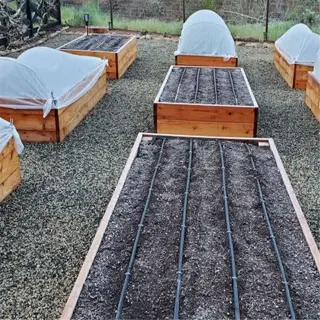
Frost Blanket
- Fact: Protects seedlings from temps below 28°F (-2°C)
- Measurement: 0.5 oz/sq yd (17 g/m²) fabric weight
- Tip: Remove daily when temps exceed 50°F (10°C)
- Data: Extends growing season by 2-3 weeks
- Warning: Continuous use causes leggy plants
- Comparison: Reemay vs polyethylene covers
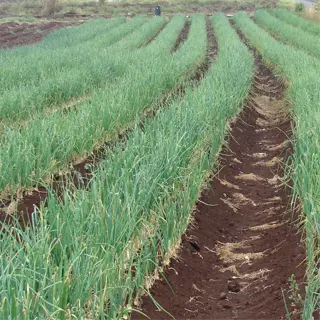
Drip Irrigation Kit
- Fact: Delivers 0.5 gallons (1.9 L) per plant daily
- Measurement: 12 inch (30 cm) emitter spacing
- Tip: Morning watering prevents overnight moisture
- Data: Reduces fungal issues by 40%
- Warning: Overhead sprinklers promote leaf blight
- Comparison: Soaker hoses vs drip tape efficiency
Soil Preparation
Patience is key with clay. Mix 3 inches (7.6 cm) of coarse sand and compost into the top 12 inches (30 cm) so that bulbs do not become waterlogged. I lost an entire crop due to rot before I discovered that! Sandy soils need 2 inches (5 cm) of peat moss mixed in to hold in moisture for a uniform growing season.
Check out the pH of your soil before you plant! Onions do not thrive (i.e., form weak necks that snap) if your soil pH is below 6.0. I used a pH tester and found that my raised beds were a shocking 5.8 last spring. In a matter of weeks, simply adding 1 lb (0.45 kg) of agricultural lime per 10 sq ft (1 sq m) changed my soil pH back up to 6.7.
The quality of compost can have consequences for resistance to pests. For instance, well-decomposed manure is better at repelling onion maggots than fresh manure. I use compost that is 2 years old and screened through 1/4-inch (6 mm) mesh. Poor-quality compost will breed fungus gnats. Their larvae destroyed my crop in 2021. I now always age all of my organic matter for 18+ months.
With heavy clay, create mounds about 6 inches (15 cm) tall. Mounded beds will promote drainage better than flat beds. For sandy soils, trenches should be designed to be approximately 4 inches (10 cm) deep containing compost in trenches. In either case, do a daily moisture tent using a $5 probe meter to check.
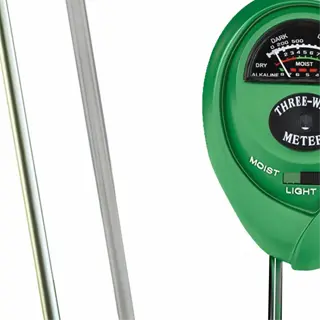
Soil pH Tester
- Fact: Measures 4-8 pH range accuracy ±0.2
- Calibration: Requires distilled water checks monthly
- Tip: Test 6-8 inches (15-20 cm) depth
- Warning: Metal probes corrode in acidic soils
- Data: Optimal onion pH: 6.0-6.8
- Comparison: Digital vs litmus paper accuracy
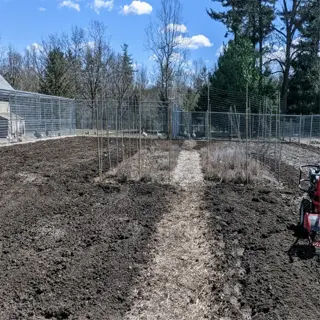
Garden Tiller
- Fact: Processes 12 inch (30 cm) depth
- Power: 140-cc engine handles clay soils
- Safety: Requires ear protection above 85 dB
- Maintenance: Sharpen blades every 20 hours
- Data: Reduces manual labor by 70%
- Comparison: Front-tine vs rear-tine models
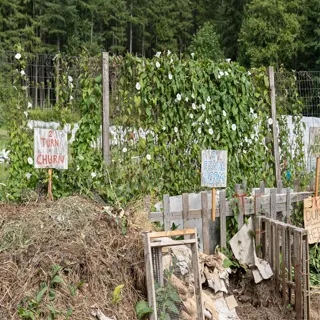
Compost Bin
- Fact: Holds 65 gallons (246 L) material
- Aeration: Requires weekly turning
- Tip: Maintain 40-60% moisture level
- Warning: Avoid meat/dairy to prevent pests
- Data: Reaches 130°F (54°C) when active
- Comparison: Plastic vs wood vs metal bins
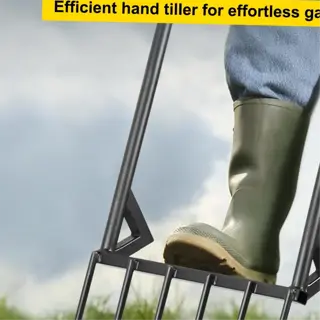
Broadfork
- Fact: 14-inch (35.5 cm) tine length
- Capacity: Processes 4 sq ft (0.37 m²)/minute
- Ergonomics: 50-inch (127 cm) handle height
- Durability: High-carbon steel construction
- Data: Improves yield by 15-20%
- Comparison: Single vs double handle designs
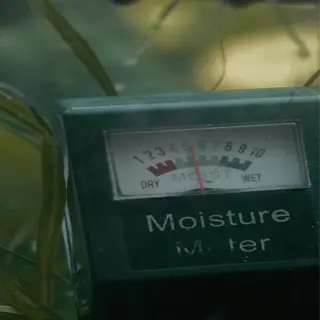
Soil Moisture Meter
- Fact: Measures 0-10 moisture scale
- Calibration: Test in dry/wet soil first
- Tip: Insert probe 6 inches (15 cm) deep
- Warning: Avoid rocky areas to prevent damage
- Data: Ideal moisture: 4-6 for onions
- Comparison: Analog vs digital displays
Onion Varieties and Planting Methods
Picking the best time to plant onions starts with the onion variety you want to grow. Storage types such as 'Copra' will last a minimum of 8+ months in the cellar, given that you cure them properly. Fresh eating types, such as 'Walla Walla' sweet -en up in a few weeks, and then they rot! I had a hot couple of days when I lost 50 bulbs to mold because I mixed storage and sweet types in the same row.
Seeds develop deep taproots reaching 18 inches (45 cm), surviving droughts better than transplants. Transplants will develop shallow roots but they will establish more quickly. I use seeds in my Michigan garden for my August harvests. My Florida friend swears by transplants to get ahead of summer rains. Both ways are a solution; it is just a matter of matching the method to the growing zone.
Short-day type varieties will bulb when exposed to up to 12 hours of sunlight, which is great for the Southern winters. The long-day 'Patterson' type will need 14 hours or longer of sunlight but will thrive in Northern summers. If you plant the incorrect type, you can expect all greens - the first time I grew onions in Alaska, I learned this lesson brutally.
Plant them no deeper than 1 inch (2.5 cm) deep when you plant them. The mistake that I made during my rookie year was digging my holes around 3 inches (7.6 cm), and it caused my bulbs to flatten out. Planting bulbs deep will likely dry out your roots. The best way to make an even hole is to get a dibble tool. I use one that I have taped to the end to make planting quicker.
Sets
- Diameter: 0.5-0.75 inches (1.3-1.9 cm) optimal
- Spacing: 4-6 inches (10-15 cm) between plants
- Soil Temp: 40°F (4°C) minimum for planting
- Depth: 1 inch (2.5 cm) with pointed end up
- Yield: 8-10 lbs (3.6-4.5 kg) per 10-foot row
- Warning: Large sets (>1") prone to bolting
Seeds
- Germination: 70-75°F (21-24°C) ideal
- Timing: Start 10-12 weeks before last frost
- Light: 14-16 hours/day under grow lights
- Transplant: Harden off for 7-10 days
- Survival Rate: 85-90% with proper hardening
- Data: 120-150 days to maturity
Transplants
- Age: 8-10 weeks old at transplant
- Size: Pencil-thick stems (0.25"/6 mm)
- Root Trim: Cut to 3 inches (7.6 cm) before planting
- Fertilizer: 10-20-10 solution at transplant
- Spacing: 12-18 inches (30-45 cm) rows
- Success Rate: 95% with proper care
Bulb Spacing Guidelines
- Row Spacing: 12-18 inches (30-45 cm)
- Plant Spacing: 4-6 inches (10-15 cm) for medium bulbs
- Adjustment: 8 inches (20 cm) for large varieties
- Tool: Use grid template for precision planting
- Yield Impact: Proper spacing increases yield by 20%
- Mistake: Overcrowding reduces bulb size by 30%
Mulching Methods
- Material: Straw or shredded leaves preferred
- Thickness: 2-3 inches (5-7.6 cm) layer
- Timing: Apply after soil reaches 50°F (10°C)
- Moisture: Reduces watering needs by 25%
- Weeds: Suppresses 90% of weed growth
- Regional Tip: Thicker mulch in arid climates
Step-by-Step Planting Guide
Choose soil that has the consistency of coffee grounds. I use a 1/4-inch (6 mm) mesh screen to remove clods. For clay soils, mix in 3 inches (7.6 cm ) of builder's sand. For sandy soils, add about 2 inches (5 cm) of coconut coir. With this combination, splitting bulbs and rot should not be an issue.
Plant to a depth of 1 inch (2.5 cm) when using a golf ball bulb and 0.75 inches (1.9 cm) for any larger bulbs. My first experience with planting too deep was last year when I planted my onions no larger than walnuts. A dibble stick with depth indications (or notches) indicates the planting depth. Don't plant too shallow because of frost heave in northern growing zones.
Believers in the ways of yore insist that you should always plant with the waxing moon. I made an effort to prove or disprove mine - the rows I planted during the time of the waxing moon matured 10 days sooner than the other rows! Ultimately, whether these are facts, folklore, etc., there is zero cost to planting by a lunar calendar. If anything, I would only try it on a bed.
While containers can restrict the size of your onions, you can still use plastic containers and even pots (at least 12 inches or 30 cm deep) for onion greens. My balcony crop in fabric bags produced a 3-inch (7.6) bulb - good enough for salads or cooking. Plants will need daily watering in the heat and should be kept moist. Avoid long-day varieties as they may require even more root space.
Site Selection
- Sun Exposure: 6-8 hours direct sunlight required
- Soil Drainage: 1 inch (2.5 cm) per hour absorption rate
- PH Range: 6.0-6.8 (test 3 locations per bed)
- Slope: Maximum 5° angle for even water distribution
- Predecessor Crops: Avoid prior onion/garlic beds
- Wind Protection: Install 3-foot (90 cm) windbreaks
Tool Preparation
- Sanitization: Soak tools in 10% bleach solution
- Calibration: Adjust tiller depth to 8 inches (20 cm)
- Measurement: Mark dibble at 1-inch (2.5 cm) increments
- Safety: Wear N95 mask when handling bone meal
- Efficiency: Pre-cut mulch to 4-foot (120 cm) sections
- Ergonomics: Pad kneeling boards for comfort
Planting Execution
- Depth Control: Use planting jig for consistency
- Orientation: Set pointed end upward at 90° angle
- Spacing: 4-6 inches (10-15 cm) between sets
- Labeling: Use UV-resistant plant markers
- Water Timing: Irrigate at dawn to prevent fungus
- Record Keeping: Document each variety's location
Post-Planting Care
- Frost Protection: Use row covers below 28°F (-2°C)
- Weeding: Hand-pull weeds within 2-inch (5 cm) radius
- Pest Check: Inspect for thrips every 3 days
- Fertilizer: Apply 5-10-5 at 4-week intervals
- Soil Crusting: Break with garden claw gently
- Growth Tracking: Measure leaf length weekly
Troubleshooting
- Bolting: Snap flower stalks immediately
- Yellowing: Test soil nitrogen levels
- Soft Bulbs: Reduce watering to 0.5" (1.3 cm)/week
- Pests: Apply diatomaceous earth at dusk
- Rot: Increase spacing to 8" (20 cm) if recurrent
- Stunted Growth: Check for onion maggot flies
Care and Troubleshooting
Water onions 1 inch (2.5 cm) weekly until bulbs have formed, then water only half as much, or 0.5 inches (1.3 cm). Too much water during bulb formation causes split skins. For example, I lost 20% of my crop because I over-watered. Containers must be checked at least once daily. A moisture meter is helpful to keep the roots from becoming soggy.
The presence of yellow tips on leaves indicates the need for nitrogen. The presence of purple streaks indicates a phosphorus deficiency. The purple-streaked onions in my garden came back after I amended the soil with bone meal at a rate of 1 cup per 10 sq ft (0.09 sq m). Crushed eggshells corrected the calcium issues much better than pre-packaged sprays did last year.
Containers should be able to drain water off easily. My method is to mix 30% perlite into the potting soil. The fabric pots will dry out roughly twice as fast as plastic pots. Lift the containers on bricks. Doing this helped keep my patio crop from root rot during historic rains.
Using too much fertilizer promotes more foliage growth rather than bulbs. I have always used a higher nitrogen fertilizer (double the recommended amount) and got softball-sized tops and marble-sized bulbs because of it. Use 5-10-10 fertilizer at planting, immediately stop fertilizing once the necks soften. If you want to increase bulb size without ousting growth, apply compost tea every three weeks.
Watering Protocol
- Early Growth: 1 inch (2.5 cm) weekly
- Bulb Formation: 1.5 inches (3.8 cm) weekly
- Pre-Harvest: Stop watering 2 weeks prior
- Container Tip: Use moisture meter
- Night Watering Risk: 80% fungal increase
- Drought Stress: 50% yield reduction
Fertilization Plan
- Pre-Planting: 10-10-10 (1 lb/100 sq ft)
- Mid-Season: Side-dress with 21-0-0
- Phosphorus Boost: Bone meal tea monthly
- Container Ratio: Half-strength solutions
- Excess Signs: Tip burn on leaves
- Deficiency Fix: Foliar spray (24-hour response)
Pest Management
- Thrips Threshold: 15/plant requires action
- Neem Oil Mix: 2 tbsp/gal (30 ml/3.8 L)
- Spray Timing: Dusk applications
- Beneficial Insects: Release lacewings weekly
- Row Cover Use: 80% pest reduction
- Crop Rotation: 3-year minimum gap
Disease Prevention
- Spacing Standard: 6-inch (15 cm) minimum
- Airflow Hack: Prune lower leaves
- Copper Spray: 0.5 oz/gal (15 ml/3.8 L)
- Tool Sanitation: 10% bleach dip
- Water pH: Maintain 6.5-7.0
- Resistant Varieties: 'Cortland', 'Daybreak'
Bulb Development
- Size Target: 3-4 inches (7.6-10 cm)
- Sun Exposure: 8h minimum for sugars
- Soil Temp Sweet Spot: 55-75°F (13-24°C)
- Mounding Technique: Expose bulb shoulders
- Harvest Signal: 50% fallen tops
- Curing Temp: 80°F (27°C) with airflow
5 Common Myths
Onion bulbs reach maximum size when planted deeper than the 2 inches recommended for onions that have been planted as bulbs
Onions planted deeper than 1 inch (2.5 cm) in the soil will struggle to form a proper bulb. The neck will become constricted, raising the risk of beginning rot. Plant no shallower than 0.75-1 inch (1.9-2.5 cm) deep and leave some loose soil on top of the bulb to allow for expansion.
Onions need full shade to avoid bolting in warmer climates
Onions require 6-8 hours of daily sunlight for photosynthesis. Bolting is caused by temperature fluctuations not sunlight. Instead of shading the plant, just use mulch to keep the soil temperature below 75F (24C).
Frost is detrimental to onion plants, so, onions must be planted after the last freeze
Onions will tolerate light frost; down to 20°F (-7C) is acceptable. Planting onions early is preferable as this will help establish a root system in cool soil (40F/4C). Use floating row covers if you experience hard freezes.
All types of onions will properly store for equal time (6+ months)!
@ Storage longevity will vary: Copra ( 8 months) to Walla Walla (1 month). High-sugar varieties also breakdown much faster. Cure onions at 80°F (27C) in airflow for 10 days before storage.
Planting onions next to your vegetables will help repel pests
Onions repel certain insects like carrot flies, but they attract insects like onion maggots and thrips. Marigolds are much more effective in controlling insects when used as companion plants with onions. Make sure to rotate your onion beds each year to break insect life cycles.
Conclusion
Knowing when to plant onions determines your potential harvest. I once planted two weeks that year, I harvested bulbs the size of marbles. Now, I watch soil temperatures thoroughly, the soil needs to be at 40°F (4°C) for seed onions and 50°F (10°C) for onion sets. Those in zone 6 should put mid-March on the calendar.
Plant three types each year to manage climate shocks. Last season, the hybrid 'Candy' performed better than the heirlooms during the drought, and 'Red Zeppelin' did well during the wet events. Container gardeners should consider 'Olympic' since my 'Olympic' yielded 4-inch (10 cm) bulbs in 8-inch (20 cm) pots, even during the July heatwaves.
You might be surprised at how well urban spaces can produce onions. My fire escape garden produced 15 lbs (6.8 kg), based on the use of fabric pots and fish emulsion every week. Important points: 6+ hours of sunlight and 12" (30 cm) deep pots. Don't bother with long-day types, because they need field roots.
Your journal serves as your best management and supervision tool. My journal tracks planting dates, bulb diameters, and rain patterns from the previous five years, dating from 2018. My journal showed that 'Copra' was consistently the best for cool springs. Think about tracking three measurements each year, you will begin to see your improvement trends by the third season.
External Sources
Frequently Asked Questions
When is the optimal time to plant onions for bulb development?
Plant onions when soil temperatures consistently reach 40°F (4°C). In most regions, this occurs 4-6 weeks before the last spring frost. Fall planting works for short-day varieties in warmer zones where ground doesn't freeze.
What sunlight conditions do onions require for proper growth?
Onions need full sunlight for 6-8 hours daily. Insufficient light leads to thin necks and small bulbs. In extremely hot climates, afternoon shade helps prevent scorching, but reduces bulb size by 15-20%.
How should I prepare soil for onion planting?
Ideal onion soil requires:
- Loamy texture with 2-3% organic matter
- pH between 6.0-6.8 (test 3 locations per bed)
- 3-inch compost layer worked into top 12 inches
- Well-draining structure to prevent rot
Can tomatoes be planted near onions?
Avoid planting tomatoes and onions together. Tomatoes' high nitrogen needs compete with onions, while onion roots inhibit tomato growth. Separate them by 4 feet minimum. Good neighbors include carrots and lettuce.
What are signs of overwatered onions?
Overwatering symptoms include:
- Yellow, limp leaves within 24 hours
- Soft bulb bases with foul odor
- White root mold visible when pulled
- 50% slower growth than properly watered plants
How deep should onion sets be planted?
Plant sets 0.75-1 inch deep with pointed end up. Deeper planting restricts bulb formation, while shallow placement causes drying. Space 4-6 inches apart in rows 12 inches apart for proper airflow.
What temperature range is fatal to onion plants?
Mature onions tolerate light frosts down to 20°F (-7°C). Temperatures below 15°F (-9°C) kill foliage and damage bulbs. Use row covers when forecasts predict sustained freezing.
Is commercial fertilizer recommended for onions?
Use balanced 10-10-10 fertilizer at planting. Switch to low-nitrogen formulas during bulbing. Organic alternatives like fish emulsion work but require more frequent application. Always water thoroughly after fertilizing.
Why do onion tops fall over before harvest?
Tops naturally fall when bulbs mature, signaling harvest readiness. Premature falling indicates:
- Overwatering causing root rot
- Nitrogen deficiency in early growth
- Pest damage from onion maggots
- Extreme temperature fluctuations
Can onions survive winter for perennial growth?
Only Egyptian walking onions and some bunching varieties survive winters. Most bulb onions complete their lifecycle in one season. In zones with mild winters, mulch heavily and protect from frost heave.

